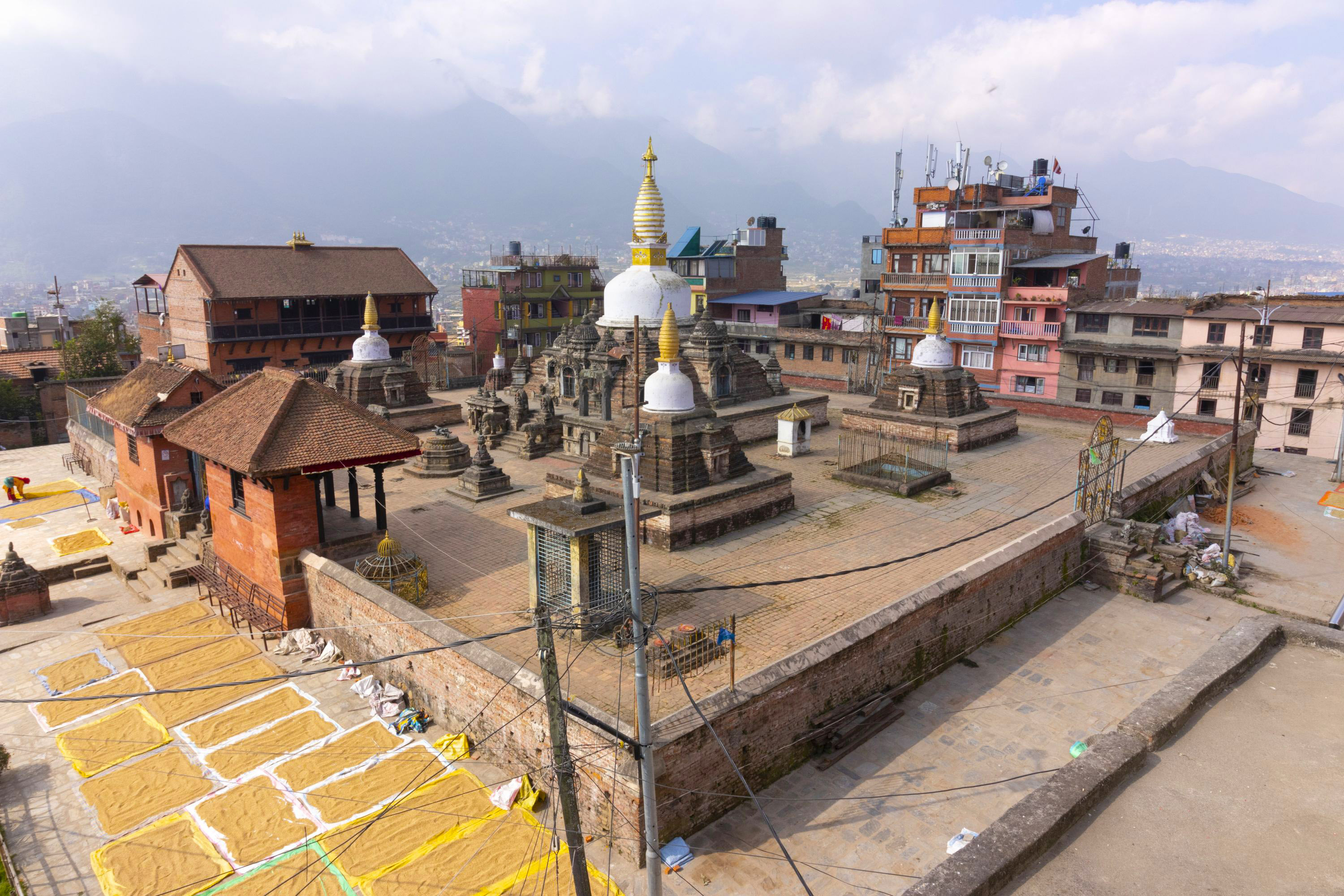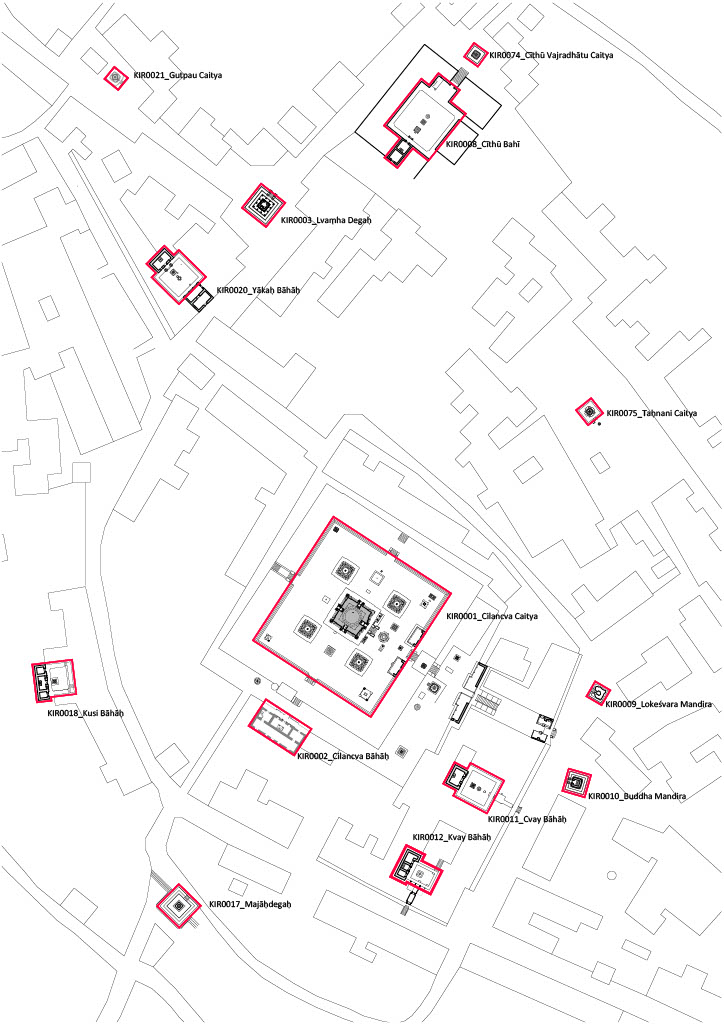Devagala Area (Eastern part of Kirtipur)

The Bāghabhairava temple is at the centre of the city of Kirtipur. The quarter of the city east of the Bāghabhairava temple is a Buddhist settlement and the area contains mostly Buddhist monuments only. After the construction of Cilancva Caitya (KIR0001) and Cilancva Bāhāḥ (KIR0002) in 1515 CE (NS 635) by Jagatapāla Varmā, a mahāpātra of Patan, many Buddhist monuments like bāhāḥs and caityas in the eastern quarter of Kirtipur. Due to the construction of only Buddhist monuments in the area, the eastern quarter of Kirtipur came to be known as 'Devagala'. Meanwhile, the western quarter of the city came to be known as 'Śivagala', as there were only Hindu monuments. Jagatapāla Varmā’s wife seems to be instrumental in encouraging him to build the grand Caitya and Bāhāḥ in Kirtipur. His wife was from Kirtipur (Locke 1985, p. 180). An inscription from the Devagala quarter also states that she was from Kirtipur. Although her name cannot be read in this inscription due to the breakage of stone, she is identified as ‘Rūpalakṣmī, a young lady from Kirtipur,’ in another inscription from the Bāghabhairava complex (D.Vajrācārya VS 2056, p. 478). Comparing it with Oldfield’s illustration from 1855 CE, the Cilancva Caitya premises seem to remain unchanged. It appears to have retained its features.
All the Buddhist monuments of the Devagala quarter of Kirtipur are worshipped during the annual procession of the Buddhist monuments in Kirtipur in memory of the people who passes away that year. Family members of the deceased go round the city accompanied by a priest on the night of Gunpunhi and the following morning to visit all the bāhāḥs and bahīs of Kirtipur.
The map of this heritage focus area incorporates only the Buddhist monuments of the Devagala quarter of Kirtipur.

Links to individual monuments
KIR0002_Cilancva Bāhāḥ
KIR0003_Lvaṃha Degaḥ
KIR0008_Cīthū Bahī
KIR0009_Lokeśvara Mandira
KIR0010_Buddha Mandira
KIR0011_Cvay Bāhāḥ
KIR0012_Kvay Bāhāḥ
KIR0017_Majāḥdegaḥ
KIR0018_Kusi Bāhāḥ
KIR0020_Yākaḥ Bāhāḥ
KIR0021_Gutpau Caitya
KIR0074_Cīthū Vajradhātu Caitya
KIR0075_Taḥnani Caitya
